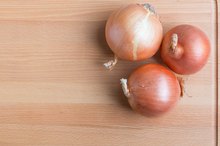The Effects of Sugar & Salt Water on Plants
Plants take in mineral salts and water through a process called osmosis. Salt and sugar in soil water can adversely effect plants. Plant life requires some mineral salts, but plants produce sugars through metabolism and do not require added sugar.
Plant Cell Osmosis
Osmosis is the diffusion of water across a membrane, Colorado State University explains. The movement across the membrane generates osmotic pressure. The membrane is permeable, which allows free movement of water, but not of the solute molecules or ions. Solute refers, in this case, to the sugar and salt to be dissolved in the water.
Movement Across the Membrane
Physical Characteristics of Glucose
Learn More
Changing concentrations of solute molecules and ions at the surface of the membrane produce variable concentrations of water molecules on both sides of the membrane. Movement across the membrane occurs when water flows from the side with the lower solute concentration to the side with the higher solute concentration, CSU reports. If pure water existed on both sides of the membrane, the osmotic pressure difference would be zero.
Effect of Sugar
Plants' cell walls become swollen and rigid when the cells fill with water. In other words, the cells become turgid, or swollen and hard, when osmotic pressure builds in the cells. This action keeps the leaves of the plant from wilting and allows it to stand up in sunlight, biology teacher Nigel D. Purchon writes on his websute. Purchon adds that when a concentrated sugar solution is added, the cell walls shrink and pull apart from each other — and the plant wilts. Sugar lowers the osmotic potential of the water present in the soil, making less water available for the plant to take in from the soil.
Effect of Salt
Carbohydrates and Fiber in Onions
Learn More
Plants require some mineral salts for survival. Salt water in high concentration, however, dehydrates the plant. A high salt-solute concentration in the soil pulls water away from the plant cells, through osmosis, and deposits it into the soil. The Salinity Management Guide website reports that different plant species have differing tolerances for soil salt levels. Injury to the plant occurs when tolerance levels are reached or exceeded.
Visible Signs of Too Much Salt
The Salinity Management Guide reports that mild to moderate salt concentration shows growth stunting and smaller yield of flowers, fruits or vegetables. Signs of high salt concentration include yellowing and browning of leaves. At very high salt concentrations, the soil becomes hard and crusty and the plant will lose its leaves and may die.
Related Articles
References
Resources
Writer Bio
Karen Klefstad began her writing career in 2010. She writes health and travel articles for various online publications. Klefstad is a radiation therapist and holds a Master of Science in clinical and administrative gerontology from National-Louis University.









